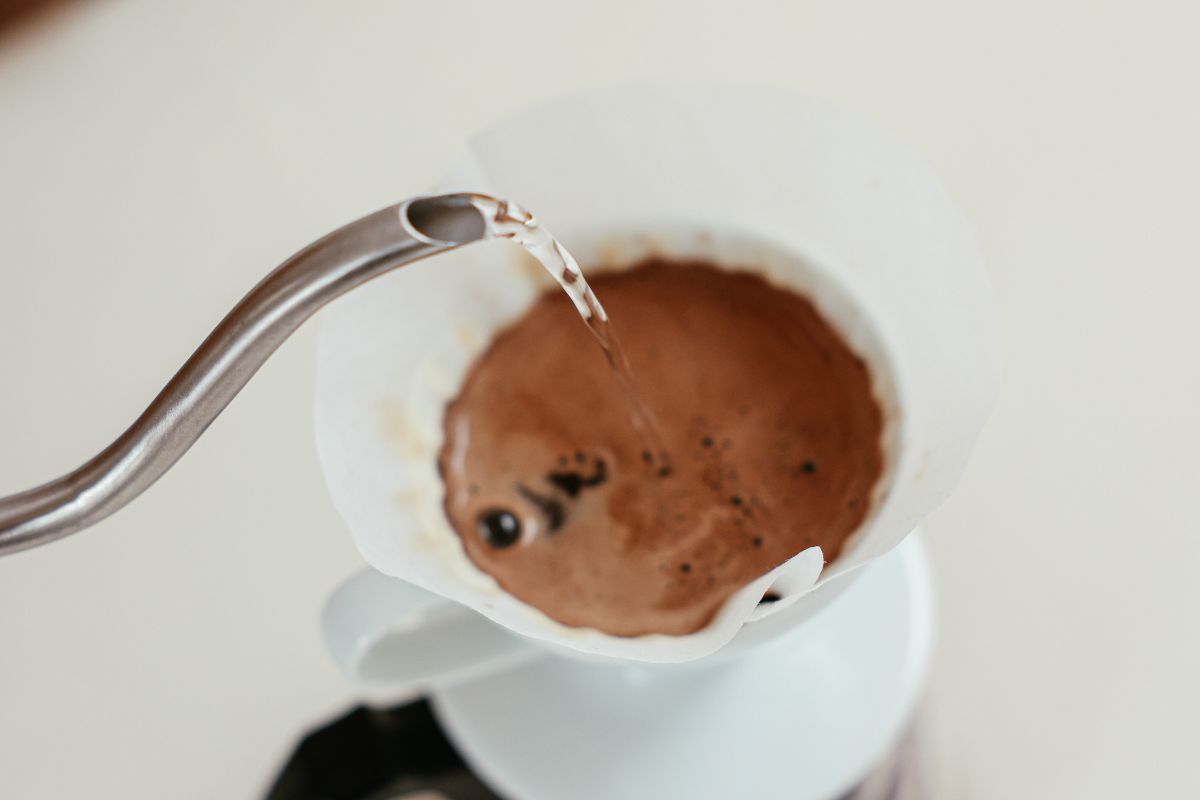If you are keen on brewing coffee at home and the best coffee-to-water ratio to use, you have probably come across the term absorption ratio. But what does absorption ratio measure in coffee? Read on to learn more about this term as used in coffee brewing and why the ratio of coffee to water matters.

Introduction to Absorption Ratio in Coffee
In coffee, the term absorption ratio refers to the amount of water that coffee absorbs during brewing. It is technically known as liquid retention ratio (LRR). For instance, an absorption ratio or LRR of 2.3 means that 2.3 grams of water were absorbed by every gram of coffee that was used when brewing.
You use the LRR as a multiplier or scaling factor. For instance, if you brew coffee with 15g of ground coffee, the total amount of water absorbed is 15g x 2.3, which equals 34.5g.
What Does Brew Ratio Mean in Coffee?
Now that you know what absorption ratio measures in coffee, it will also help to know more about brew ratio. Brew ratio is mass of water divided by the mass of ground coffee used during brewing. Brew ratio is weight-based and is applied to brew any amount of coffee, be it one cup or a large pot.
After numerous experiments with different coffee-to-water ratios, it is agreed that the golden ratio for brewing coffee is 1:18 (1 part ground coffee for 18 parts water). With this ratio, you get the best-tasting and most balanced cup of coffee. If you lower the ratio, you will get more concentrated coffee. Increasing the ratio will give you a lighter brew.
For instance, if you want a stronger cup of coffee, you can use a coffee-to-water ratio of 1:15. Espresso is more concentrated than regular coffee. For espresso, you use a coffee-to-water ratio of 1:2. That is why espresso is taken in shots rather than standard coffee cups due to its extremely high concentration.
Also, espresso contains more caffeine per serving than regular coffee due to its higher concentration. Espresso is often diluted with milk and water to make espresso-based drinks such as cappuccino, Americano, mocha, macchiato, and latte among others.
How to Get Coffee to Water Ratio Right
When brewing coffee at home, you need to know the amount of coffee beans you need to grind for a specific amount of water. To do this, start by deciding on the amount of water to use. If you want to brew a certain amount of coffee, say a single mug, divide the amount of the water by the desired strength.
For instance, a standard diner mug can hold 10oz (283 grams) of water. In this case, divide the amount of water the mug can hold by the ratio you want. In this example, you can go for a ratio of 1:17. That means you will need to grind coffee equivalent to 283/17, which is equal to 16.5 grams.
Alternatively, you can start by deciding on the amount of coffee you want to use. In this case, you will know the amount of water to use by multiplying the amount of coffee by your desired ratio. For example, if you have decided to use 20 grams of coffee and you want a strong cup of coffee, you can use a ratio of 1:15. Thus, the amount of water you will need is 20 x 15, which equals 300 grams of water.
What is the Importance of Coffee to Water Ratio?
Although coffee to water ratio sounds like a simple concept, it plays a major role in the final taste of your brew. The less coffee you use, the lighter your brew will taste, and the more coffee you use, the stronger it will taste. However, it is not the only consideration when brewing coffee. Other important considerations to make include the grind size, brewing time, and water temperature. You can only get a well-balanced and tasty cup of coffee by considering all these factors.